Home > Auctions > 26 November - 1 December 2024
Ancient Art, Antiquities, Natural History & Coins
French private collection.
From the 'Yvelines Department', Northern France.
with Mme Digard, Drouot, Paris, 7 February 2011, no.107.
Accompanied by a copy of a French cultural passport.
This lot has been checked against the Interpol Database of stolen works of art and is accompanied by a search certificate number no.12072-218133.
Cf. Aston, B.G., Ancient Egyptian Stone Vessels: Materials and Forms, SAGA 5, Heidelberg, 1994, p.95, no. 13, for type.
From the private collection of Mr K.A., acquired in the 1990s-early 2000s.
This lot has been checked against the Interpol Database of stolen works of art and is accompanied by a search certificate number no.12367-225768.
Cf. El-Khouli, Egyptian Stone Vessels: Predynastic Period to Dynasty III, vol.3, London, 1974, pl. 105, 4152-4153, for a vessel of similar profile.
Stone vessels, made from various styles and types of stone, were commonly found in Early Dynastic and Old Kingdom tombs as funerary equipment. One of the most significant discoveries was the recovery of over 30,000 stone vessels in King Djoser's Step Pyramid complex.
Acquired in the mid 1980s-1990s.
Private collection, Switzerland, thence by descent.
Private collection, since the late 1990s.
Cf. Hein, I., and Satzinger, H., Stelen des Mittleren Reiches II: einschliesslich der I. und II. zwischenzeit Kunsthistorisches Museum, Wien ägyptisch-orientalische sammlung, Corpus Antiquitatum Aegyptiacarum, Mainz am Rhein, 1993, pp.136-139 for a complete false door stela with a similar scene of the deceased seated before an offering table.
The ancient Egyptians believed the soul of the departed could move in and out of the tomb using a ‘false door.’ This door was identified by a recessed surface with a symbolic entrance at its centre. In the Middle Kingdom, the false door design was combined with other elements or represented by a raised border and cornice above on rectangular stelae.
Acquired in the mid 1980s-1990s.
Private collection, Switzerland, thence by descent.
Private collection, since the late 1990s.
Cf. Oppenheim, A., Arnold, Do., Arnold, D., Yamamoto, K. (eds.), Ancient Egypt Transformed: The Middle Kingdom, New York, 2015, p.61, cat.11 detail, for similar styling of the eye and eyebrow.
These fragments seem to be sections of tomb wall reliefs. They include portions of an offering formula, mention of a 'district', a festival, and the symbol of Anubis. The decoration in different parts of some Middle Kingdom tombs had scenes and texts applied in paint or executed with raised relief carving.
From an American deceased estate, acquired between 1970-1989.
with Bonhams, London, 28 October 2009, no.23.
Private collection, Europe.
The second-to-last complete sign in the central register is a semi-hieratic version of the balancing post hieroglyph, suggesting an 18th Dynasty or later New Kingdom date.
Léon Rodrigues-Ely (1924–1973), Marseille, France.
with Christie's, Paris, 6 May 2015, no.93.
Private collection, Europe.
Accompanied by a copy of an Art Loss Register certificate no.S00104585.
This lot has been checked against the Interpol Database of stolen works of art and is accompanied by a search certificate number no.12369-226941.
Cf. Chassinat, É., Le Temple d’Edfou,Vol.12, Cairo, 1934, pl.331, for a similar low relief representation of King Ptolemy IV in the Temple of Horus, Edfu.
Léon Rodrigues-Ely (1924–1973) was a prominent French collector based in Marseille, known for his keen interest in fine art and antiquities. Throughout his life, Rodrigues-Ely assembled an eclectic and esteemed collection, particularly focusing on European and Mediterranean artifacts. His passion for collecting was fuelled by a deep appreciation for history and culture, and he was well-regarded among art dealers and scholars alike. Many of the pieces in his collection were acquired from significant galleries and private collections across Europe, reflecting his dedication to preserving cultural heritage. Rodrigues-Ely’s collection continued to be highly sought after following his death, with several pieces passing through prestigious auction houses, cementing his legacy in the art world.
From an early 20th century UK collection.
Accompanied by a previous typed cataloguing card.
Ex R. Liechti (1934-2010) Geneva, Switzerland, formed between 1950-1990s.
Accompanied by a copy of an old collection inventory note.
Cf. Petrie, W.M.F., Amulets. Illustrated by the Egyptian Collection in University College, London, 1914, pl. XXV, no. 138z, for a wedjat-eye amulet of similar style.
The wedjat-eye amulet is a representation of the healed eye of the god Horus, featuring both human and falcon elements. The name wedjat in ancient Egyptian means ‘the one that is sound.’ According to Egyptian mythology, Horus' eye was wounded or taken by the god Seth and restored by Thoth. The wedjat-eye amulet was thought to protect its wearer and bestow the power of recovery and regeneration onto them. It was very popular and used by both the living and the dead.
From an early 20th century collection.
Cf. Petrie, W.M.F., Amulets. Illustrated by the Egyptian Collection in University College, London, 1914, pl. I, nos.7a-p, for type; Andrews, C., and van Dijk, J., Objects for Eternity: Egyptian Antiquities from the W. Arnold Meijer Collection, Mainz am Rhein, 2006, p.128, no. 2.34a.
According to ancient Egyptian beliefs, the heart (ib) was considered to be the centre of intelligence, emotions, and behaviour. The heart was also believed to store an individual's memories. During the Weighing of the Heart ceremony in the afterlife, the heart could speak up for the deceased and account for their lifetime of actions before Osiris. For this reason, heart amulets were placed on the mummy to safeguard the organ and ensure a favourable outcome during judgment.
Ex Swiss collection, kept in London since the 1980s.
Accompanied by a copy of a previous illustrated catalogue page.
Cf. Andrews, C., Ancient Egyptian Jewellery, London, 1990, 174 no. 160a, for a similar necklace with gold flies.
Since Egyptian artists often depicted fly whisks in the hands of pharaohs and high officials, one might assume that flies were simply a nuisance. However, the Egyptians held flies in high regard due to their quick speed, reactions, and persistence. Small fly amulets first appeared in burials during the Naqada II Period, c. 3200 B.C. These amulets grew in popularity, and the materials used to make them expanded during the New Kingdom, including gold, silver, lapis lazuli, carnelian, amethyst, faience, and bone. Fly amulets were believed to protect against insect bites and to ward off troublesome airborne creatures through apotropaic magic. Some believe they may have even been intended to symbolise the fly’s fecundity. Additionally, pharaohs would bestow gold fly-shaped pendants as military awards to honour the bravery and fly-like persistence of soldiers in battle.
Private collection.
Acquired in 2009.
Private collection, Europe.
Cf. Petrie, W.M.F., Amulets. Illustrated by the Egyptian Collection in University College, London, 1914, pl. I, nos.7a-p, for type; Andrews, C., and van Dijk, J., Objects for Eternity: Egyptian Antiquities from the W. Arnold Meijer Collection, Mainz am Rhein, 2006, p.128, no. 2.34a, for type.
Acquired in the mid 1980s-1990s.
Private collection, Switzerland, thence by descent.
Private collection, since the late 1990s.
Cf. A scarab (accession number:76.30.1924) in The Israel Museum, Jerusalem, for a Phoenician scarab with a similar double-winged scarab.
1 - 12 of 3419 LOTS

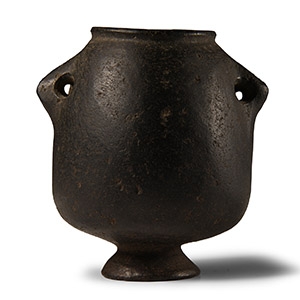

.jpg)
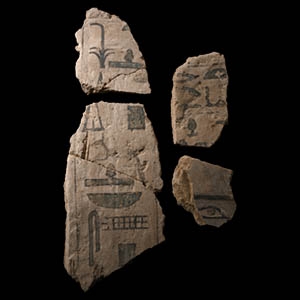
.jpg)
.jpg)
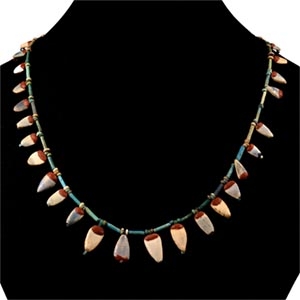

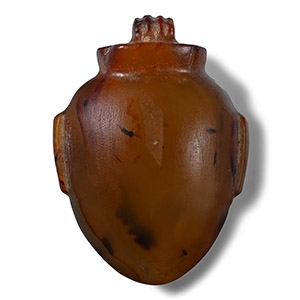

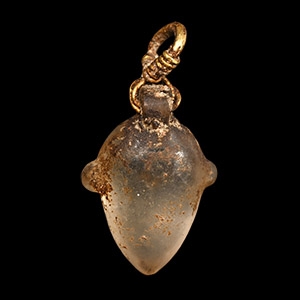
.jpg)



